Nell Barber
Expanding on the BRIAR Dataset: A Comprehensive Whole Body Biometric Recognition Resource at Extreme Distances and Real-World Scenarios (Collections 1-4)
Jan 23, 2025Abstract:The state-of-the-art in biometric recognition algorithms and operational systems has advanced quickly in recent years providing high accuracy and robustness in more challenging collection environments and consumer applications. However, the technology still suffers greatly when applied to non-conventional settings such as those seen when performing identification at extreme distances or from elevated cameras on buildings or mounted to UAVs. This paper summarizes an extension to the largest dataset currently focused on addressing these operational challenges, and describes its composition as well as methodologies of collection, curation, and annotation.
From Data to Insights: A Covariate Analysis of the IARPA BRIAR Dataset for Multimodal Biometric Recognition Algorithms at Altitude and Range
Sep 03, 2024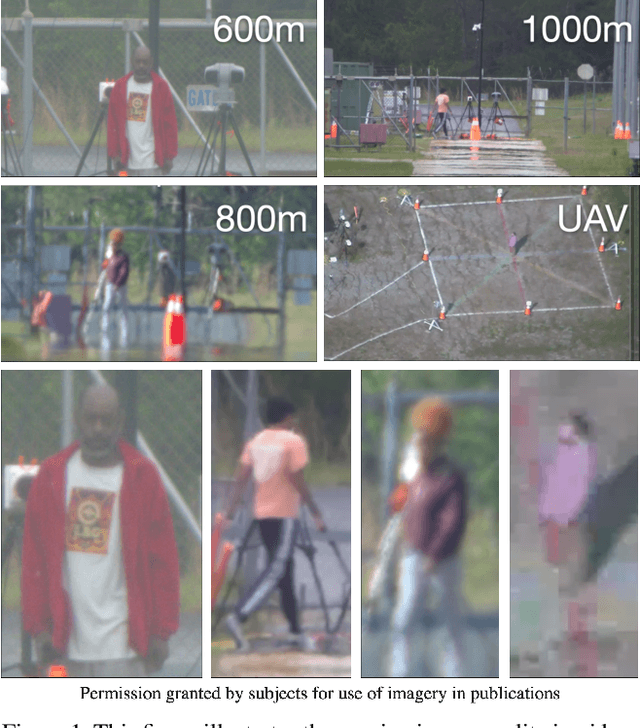


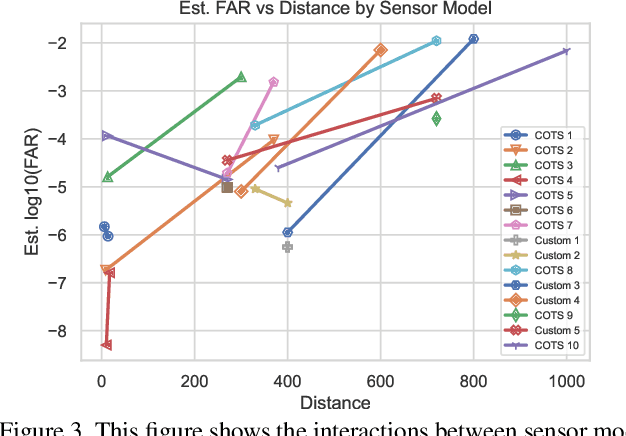
Abstract:This paper examines covariate effects on fused whole body biometrics performance in the IARPA BRIAR dataset, specifically focusing on UAV platforms, elevated positions, and distances up to 1000 meters. The dataset includes outdoor videos compared with indoor images and controlled gait recordings. Normalized raw fusion scores relate directly to predicted false accept rates (FAR), offering an intuitive means for interpreting model results. A linear model is developed to predict biometric algorithm scores, analyzing their performance to identify the most influential covariates on accuracy at altitude and range. Weather factors like temperature, wind speed, solar loading, and turbulence are also investigated in this analysis. The study found that resolution and camera distance best predicted accuracy and findings can guide future research and development efforts in long-range/elevated/UAV biometrics and support the creation of more reliable and robust systems for national security and other critical domains.
Long-Range Biometric Identification in Real World Scenarios: A Comprehensive Evaluation Framework Based on Missions
Sep 03, 2024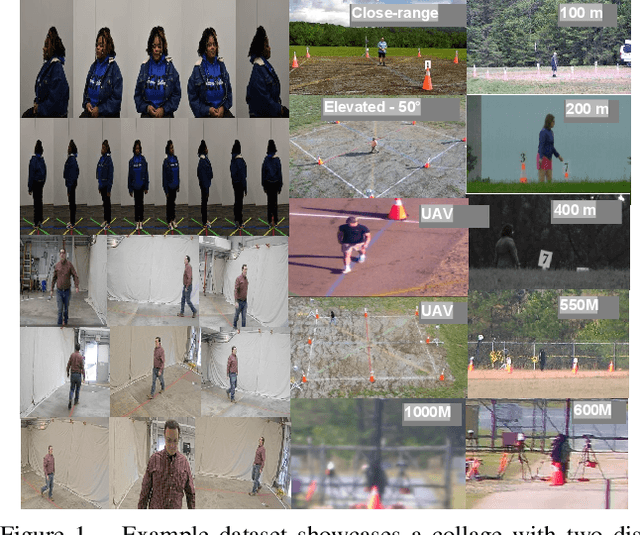
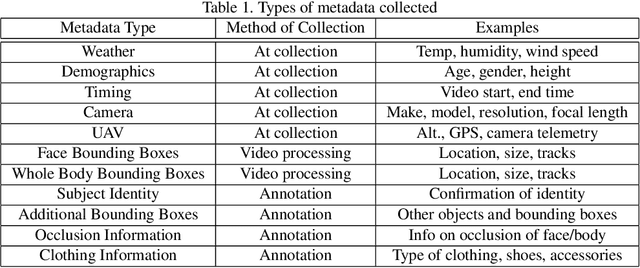
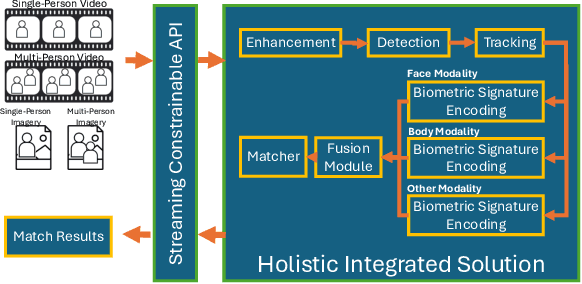
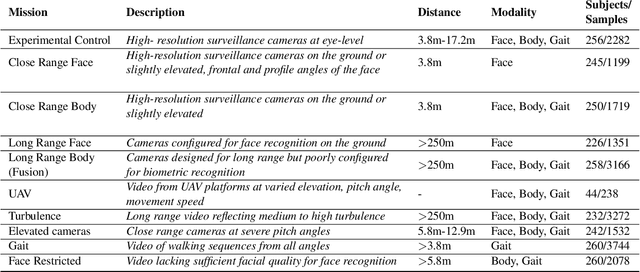
Abstract:The considerable body of data available for evaluating biometric recognition systems in Research and Development (R\&D) environments has contributed to the increasingly common problem of target performance mismatch. Biometric algorithms are frequently tested against data that may not reflect the real world applications they target. From a Testing and Evaluation (T\&E) standpoint, this domain mismatch causes difficulty assessing when improvements in State-of-the-Art (SOTA) research actually translate to improved applied outcomes. This problem can be addressed with thoughtful preparation of data and experimental methods to reflect specific use-cases and scenarios. To that end, this paper evaluates research solutions for identifying individuals at ranges and altitudes, which could support various application areas such as counterterrorism, protection of critical infrastructure facilities, military force protection, and border security. We address challenges including image quality issues and reliance on face recognition as the sole biometric modality. By fusing face and body features, we propose developing robust biometric systems for effective long-range identification from both the ground and steep pitch angles. Preliminary results show promising progress in whole-body recognition. This paper presents these early findings and discusses potential future directions for advancing long-range biometric identification systems based on mission-driven metrics.
Expanding Accurate Person Recognition to New Altitudes and Ranges: The BRIAR Dataset
Nov 03, 2022



Abstract:Face recognition technology has advanced significantly in recent years due largely to the availability of large and increasingly complex training datasets for use in deep learning models. These datasets, however, typically comprise images scraped from news sites or social media platforms and, therefore, have limited utility in more advanced security, forensics, and military applications. These applications require lower resolution, longer ranges, and elevated viewpoints. To meet these critical needs, we collected and curated the first and second subsets of a large multi-modal biometric dataset designed for use in the research and development (R&D) of biometric recognition technologies under extremely challenging conditions. Thus far, the dataset includes more than 350,000 still images and over 1,300 hours of video footage of approximately 1,000 subjects. To collect this data, we used Nikon DSLR cameras, a variety of commercial surveillance cameras, specialized long-rage R&D cameras, and Group 1 and Group 2 UAV platforms. The goal is to support the development of algorithms capable of accurately recognizing people at ranges up to 1,000 m and from high angles of elevation. These advances will include improvements to the state of the art in face recognition and will support new research in the area of whole-body recognition using methods based on gait and anthropometry. This paper describes methods used to collect and curate the dataset, and the dataset's characteristics at the current stage.
FaRO 2: an Open Source, Configurable Smart City Framework for Real-Time Distributed Vision and Biometric Systems
Sep 26, 2022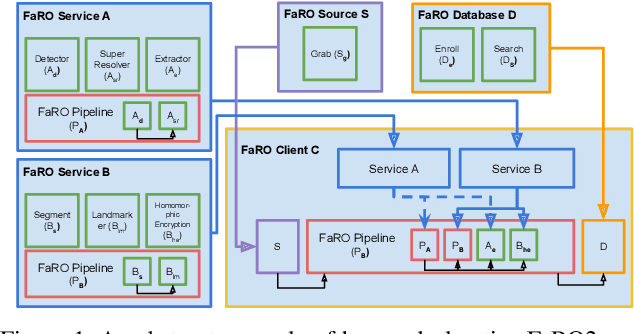
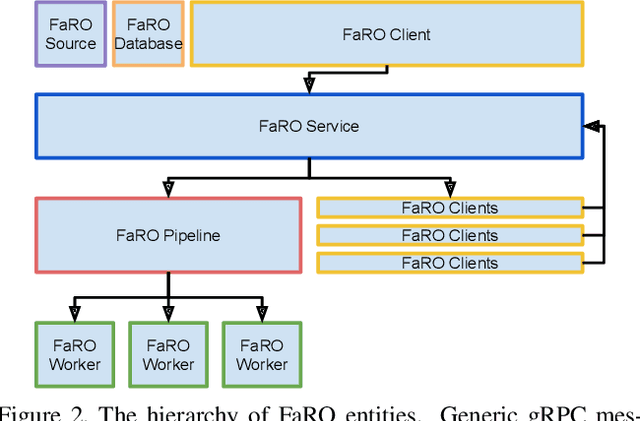
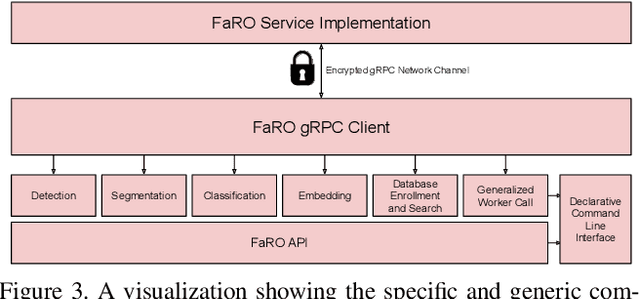
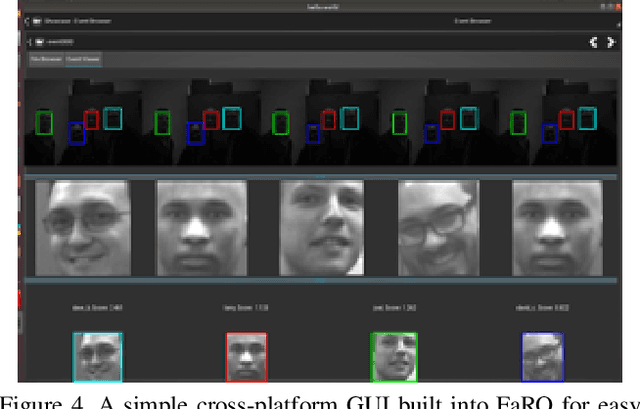
Abstract:Recent global growth in the interest of smart cities has led to trillions of dollars of investment toward research and development. These connected cities have the potential to create a symbiosis of technology and society and revolutionize the cost of living, safety, ecological sustainability, and quality of life of societies on a world-wide scale. Some key components of the smart city construct are connected smart grids, self-driving cars, federated learning systems, smart utilities, large-scale public transit, and proactive surveillance systems. While exciting in prospect, these technologies and their subsequent integration cannot be attempted without addressing the potential societal impacts of such a high degree of automation and data sharing. Additionally, the feasibility of coordinating so many disparate tasks will require a fast, extensible, unifying framework. To that end, we propose FaRO2, a completely reimagined successor to FaRO1, built from the ground up. FaRO2 affords all of the same functionality as its predecessor, serving as a unified biometric API harness that allows for seamless evaluation, deployment, and simple pipeline creation for heterogeneous biometric software. FaRO2 additionally provides a fully declarative capability for defining and coordinating custom machine learning and sensor pipelines, allowing the distribution of processes across otherwise incompatible hardware and networks. FaRO2 ultimately provides a way to quickly configure, hot-swap, and expand large coordinated or federated systems online without interruptions for maintenance. Because much of the data collected in a smart city contains Personally Identifying Information (PII), FaRO2 also provides built-in tools and layers to ensure secure and encrypted streaming, storage, and access of PII data across distributed systems.
 Add to Chrome
Add to Chrome Add to Firefox
Add to Firefox Add to Edge
Add to Edge